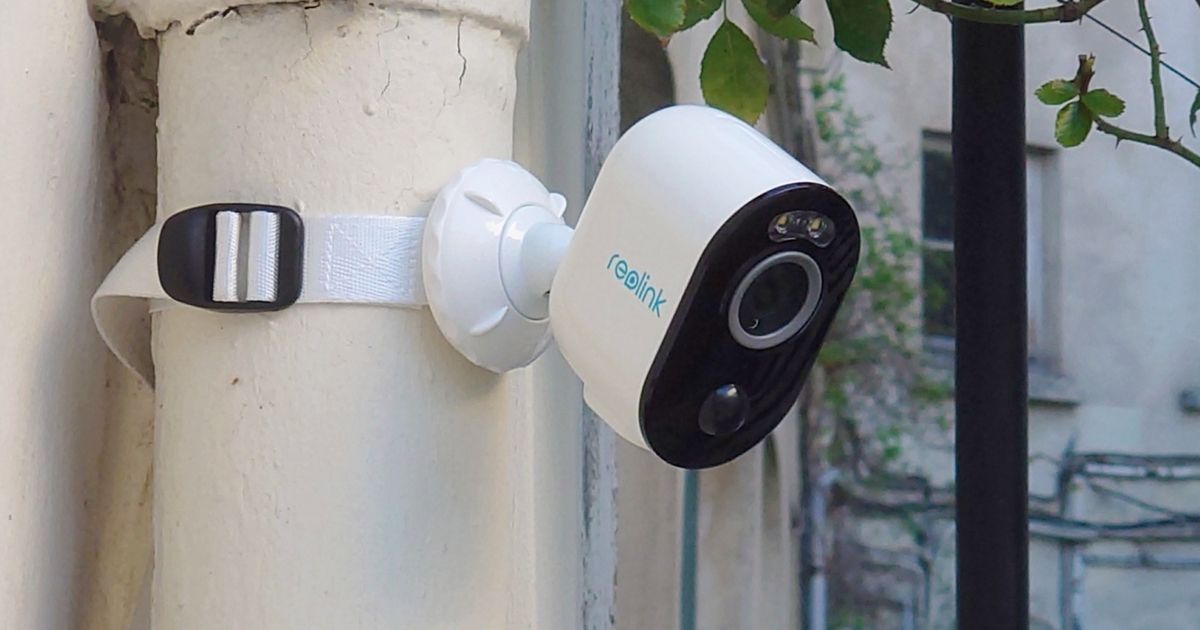Behind the ultra-wide-angle optics of the Argus 3 Pro is a 4-megapixel sensor that enables recordings in 2560 x 1440 pixels, and Reolink offers many setting options. The resolution cannot be reduced to reduce the size of the recordings, but it is possible to consult and download them in a resolution of 640 x 360 pixels if, for example, the connection is not very good. The quality isn’t good enough to take full advantage of the footage, but it’s at least possible to get an idea of what triggered the camera.
Low resolution
High definition magnification
The manufacturer also lets you play with the frame rate and bit rate. There are also brightness, exposure and backlight settings – to be understood as backlight. It is thus possible, as in an HDR mode, to increase the dynamic range of the image when there is backlight. In addition to all these settings, there are also various resolutions for the live display and the resulting images to choose from (2560 x 1440, 1280 x 720 and 640 x 360 pixels).
To show where Reolink’s camera stands in the market in terms of image quality, we’ve selected crops of a shot that we’ve compared to others we received from Google’s Nest Cam (Battery) under similar conditions. This model tops our guide to the best battery cameras.
during the day
The Argus 3 Pro produces good quality recordings. The various elements that make up our test scene are captured with a satisfactory level of detail. The cover of the book is legible, the playing cards are identifiable, and most importantly, the facial features appear well defined.
Google Nest Cam (Battery)
Enlarge Reolink Argus 3 Pro
Just like Ezviz’s BC1C 2K+, the Reolink camera struggles to assert its 4-megapixel versus Google’s 2-megapixel. The Nest Cam (battery) shows more detail and, thanks to its better light management, is able to show off certain elements better, such as the embroidery of our white fabric. Still, we can limit the problems of over- and underexposure of the Argus 3 Pro thanks to the different settings available.
At night
With its infrared vision, the Reolink camera performs slightly better in the bright areas of our test scene, while offering almost the same level of detail as in daylight. The Nest Cam (Battery) image is still sharper and superior overall, but let’s not forget that the Argus 3 Pro also offers colored night vision with its two small LED projectors.
Google Nest Cam (Battery)
Enlarge Reolink Argus 3 Pro
This colored night vision allows for surprisingly good image quality as it is even superior to what we were able to observe during the day. If we factor out the overexposure issues due to the close proximity of our test scene and the lack of power adjustment for the projectors, the image is particularly sharp and detailed. Of course, the projectors of the Argus 3 Pro, like the infrared LEDs, do not have an unlimited range and the image quality depends heavily on the distance of the subjects: the further away they are, the blurrier they appear. Electronic noise can also occur.
Color night vision
Enlarge IR view
The Argus 3 Pro still allowed us to identify a person up to 5 meters away with its night vision and little less with its infrared vision: 4 meters. We had also estimated this distance at 4 meters with the infrared view of the Nest Cam (battery), whose detection performance does not have to be envied by the Reolink camera either. Both cameras detected activity up to 9 meters away, the maximum distance required by our lab. Reolink’s camera is also very responsive when it comes to activating its headlights or infrared vision: just wait 2 seconds.

